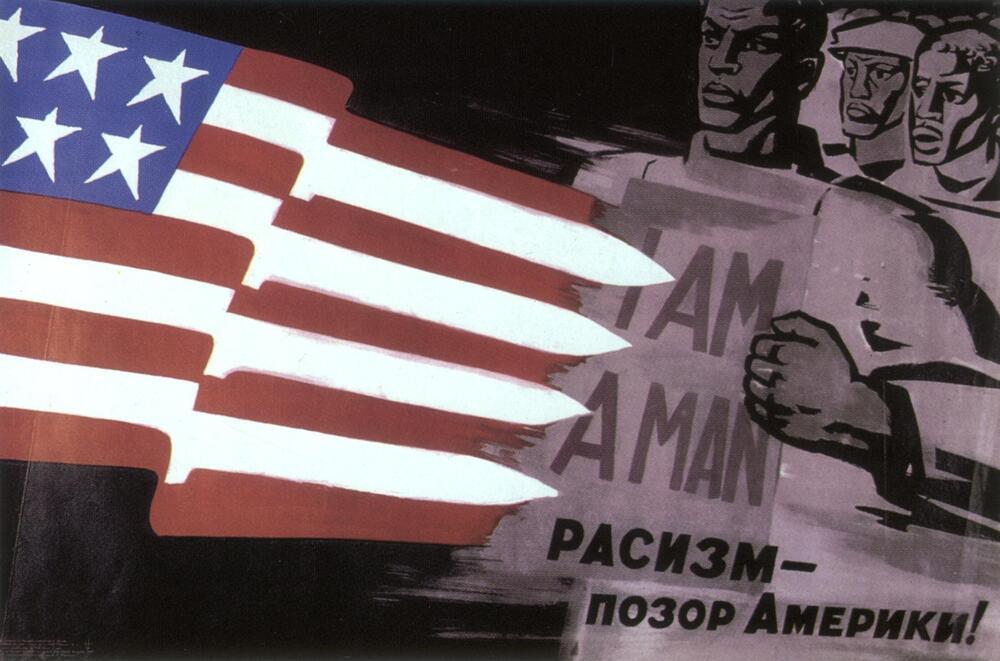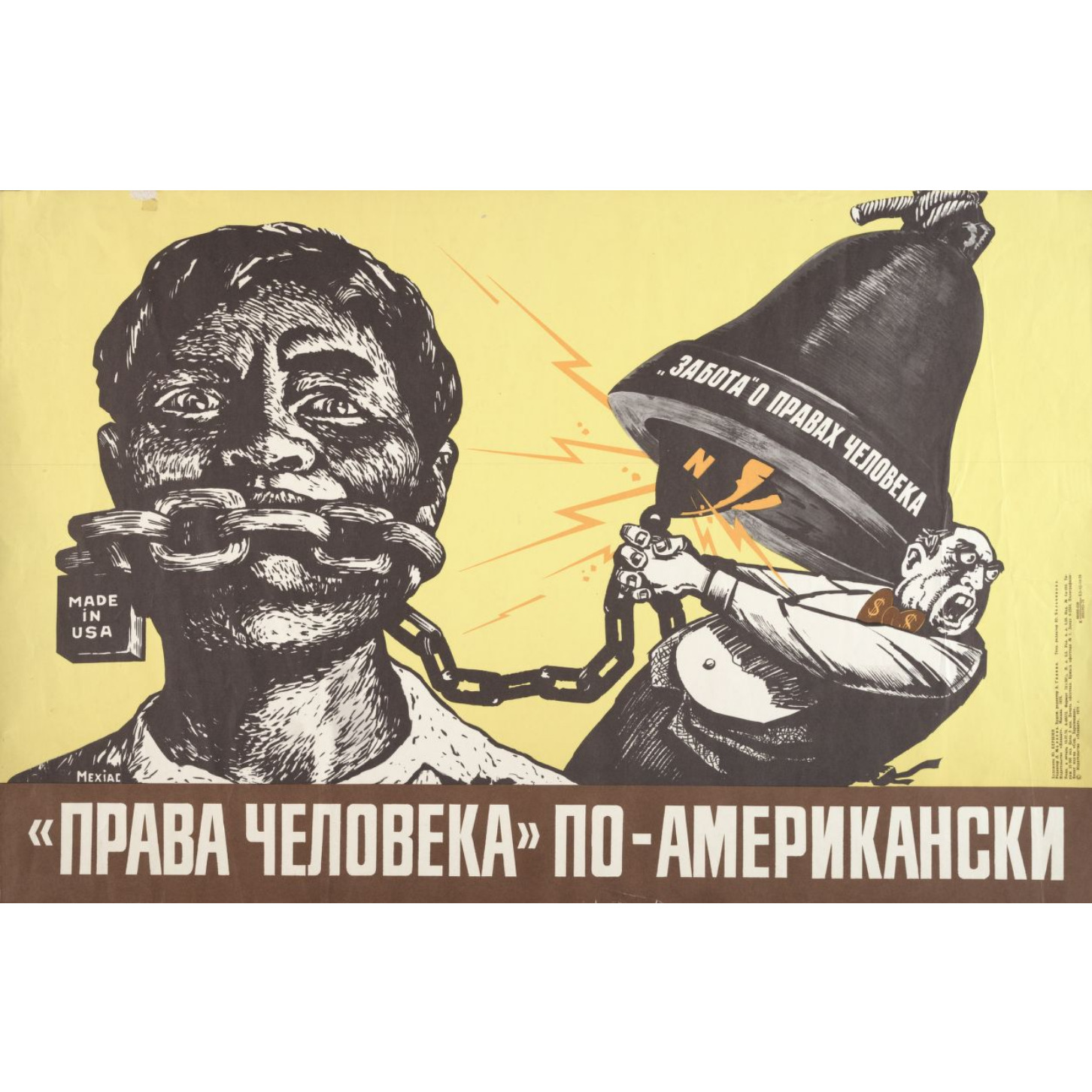1970s Propaganda
Anti-Racism Propaganda
One of the common themes of Soviet propaganda was using imagery and text to praise the USSR, and attack the capitalist West. Its biggest target, the United States, was often made fun of or portrayed as immoral and power-hungry.
Propaganda in the USSR was used to depict the Soviet Union as an equal society, both economically (by destroying class distinctions) and racially. Early in the establishment of its government, the Soviet Union had been advocating for black people to come live and work because of its accepting nature. But, this notion that the Soviet Union was anti-racist became much more visible in propaganda following the 1950s/60s protests for Civil Rights in the United States. In the 1970s, the USSR was strongly condemning racism in the United States through propaganda.
Examples of Soviet propaganda displaying America's mistreatment of African Americans, and how racism was a shame of American society:
Was the Soviet Union Racist?
The relationship between Soviet citizens and African students who came to the country to study was friendly, but furthered racial stereotypes and notions about cultural identity. Many African nations invested in their young professionals, sending them abroad to the Soviet Union for educational purposes (Guillory 2004, 271-272). The Soviet Union mutually benefited from this exchange, hoping to "cultivate sincere friends" and "expand its influence" throughout the continent (Guillory 2004, 272). African students were very much enculturated into Soviet society, participating in institutions and engaging with peers and other officials. But, these encounters were used to promote Soviet altruism - the government was "rearing the 'backward' and 'oppressed'" into "scientifically endowed people" (Guillory 2004, 272). What was perceived as acceptance was actually a way for Soviet citizens to reflect and behave in cultural superiority.
By 1968, over forty African countries particpated in the student-exchange programs. Using language that reflected stereotypes of Africans, the Soviet's prided themselves on inviting "backwards" individuals to "learn better" (Guillory 2004, 273). The government continued to portray them as the other - referring to African exchange students as "our foreigners" (Guillory 2004, 273).
One exchange student remembers when he went to buy soap at a pharamacy in the USSR. A woman had come up to him and commented that he'd "better buy some soap" because if he "washed more often" he "would not be so black" (Guillory 2004, 277). This, once again, reflected stereotypes and negative views held by Soviet citizens about Africans.
Focusing on stories told by participants in the African student-exchange program, the Soviet Union was not the most welcoming, progressive, and equal society - stereotypes drove racially motivated comments and treatment of students. It would be unfair to compare these examples to the mistreatment of African-Americans in the United States, but the USSR could not claim itself to be less-racist, and a more equal and accepting society.
As described by one author, "While the Soviet Union practiced racial equality by offering equal opportunity for [black people with] employment and housing, an overarching sense of exoticism regarding black people prevailed [...] they were more of a curiosity to the masses than embraced as citizens" (Helbig 2014, 55-56). This exact sentiment can be said for the United States, and is ironically reflected in the critical propaganda images displayed above and below.



